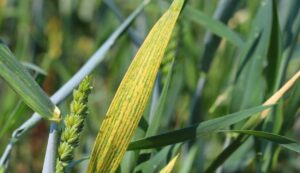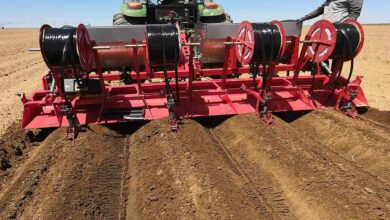Try these miraculous remedies to get rid of yellow wheat leaves
Wheat Yellow Leaves Problem: Wintertime yellowing of the wheat crop’s lower leaves is a regular issue, particularly when the temperature falls below 5°C. Around December 25, this issue is more prevalent in North India, particularly in areas where stubble is burned. The cold makes the microorganisms in the soil dormant. The plants do not get the essential nutrients when the microbes cease to function, which causes the leaves to become yellow. This issue may be lessened by taking precautions against the cold, managing nutrients properly, and avoiding burning stubble.

Learn about the causes and treatments for yellowing of wheat leaves.
What causes the yellowing of wheat leaves?
- Reduced microbial activity: The cold causes a reduction in the microbial activity in the soil. These microbes are crucial to the plants’ ability to receive nutrients.
- Deficiency in nitrogen: Cold weather reduces the amount of nitrogen available. Lower leaves begin to become yellow as a result of nitrogen being transferred to the higher sections of the plant.
- Water stagnation: After irrigation, standing water in the field harms roots and prevents nutrients from being absorbed.
- Burning stubble has the effect of lowering the amount of beneficial microbes in the soil, which lowers the crop’s nutritional potential.
Resolving issues
- Timely sowing: To lessen the impact of cold, sow between the end of October and November 15.
- Management of irrigation: Avoid waterlogging and provide the initial irrigation 20 to 25 days later. Additionally, irrigation lessens the impact of frost on chilly evenings.
- Use a balanced quantity of zinc sulfate and nitrogen when spraying fertilizers. Plants may be kept green by misting their leaves with 1% urea.
- Choose disease-resistant cultivars: HD-2967 and PBW-343 are resistant to yellow rust and other diseases.
- Use of organic fertilizers: Trichoderma and vermicompost are two examples of organic practices that improve soil fertility.
Don’t burn agricultural wastes
Farmers should never burn the leftovers from a previous crop before planting wheat since this leaves the land bare. Use a decomposer to decay the stubble and then incorporate it into the soil rather than burning it. As a result, the soil becomes more fertile and has more microbes.
Awareness and observation are crucial
Farmers should examine the soil for nutritional deficiencies and keep a close eye on their crops. By using Integrated Pest Management (IPM), the issue of wheat leaf yellowing may be managed.





